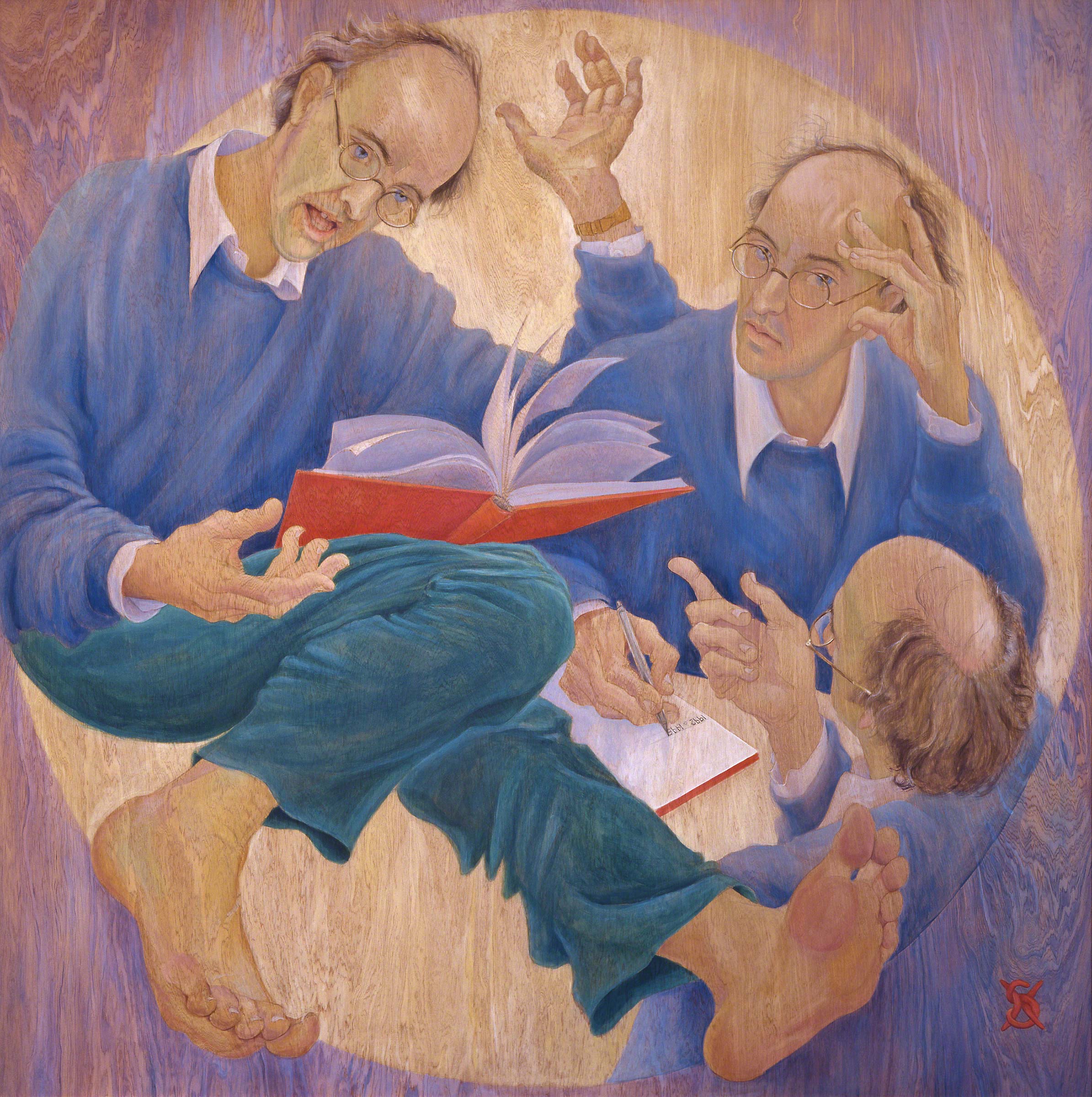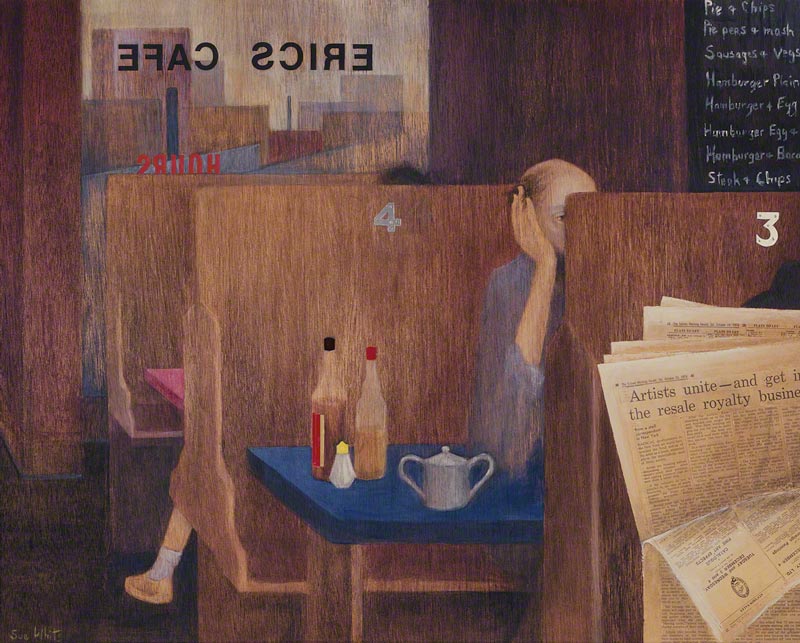Biography
Childhood and student years (1941–1961)
Born in Adelaide, South Australia in 1941, Susan Dorothea White grew up in the outback mining city, Broken Hill. She was encouraged to develop artistic skills by parents and relatives with a keen interest in the visual arts. Susan's grandfather, a competent water-colourist, collected her paintings and kept her supplied with modelling clay. During holidays in Adelaide, her aunty took Susan to the Art Gallery of South Australia. When her father gave her a set of woodcarving tools for her tenth birthday she carved Horse's head, for Grandpa.
Susan commenced boarding school in Adelaide in 1954. She took art and music as extracurricular subjects, later becoming a piano accompanist at the school. Her art teacher Margaret Walloscheck was highly regarded – she had taught Ivor Hele when he was a “lad in short pants” at the South Australian School of Arts. At age 15 Susan decided on a career in art over music. Returning during school holidays, she painted the outback landscape she had grown to love. Her parents would drive her to remote locations in the desert, leaving her there for the day with her art equipment (and a flagon of ice in summer). She devised a temporary easel to prevent the painting blowing over in the desert wind by driving two stakes into the ground and clamping the painting board to the stakes. She preferred Masonite (composition board) to canvas for its smooth surface and affordability. In 1958 at age 16, she received her first landscape commission The creek gum, Umberumberka Creek, for which she was paid five guineas.
While still at boarding school, Susan was taught by James Cant at South Australian School of Arts on Saturday mornings. An exhibition in Adelaide of large watercolours of the outback by Albert Namatjira impressed the teenager. She remained at boarding school to complete the Leaving Certificate in 1958 and was awarded the Geography Prize and Medal for coming first in the state. Ironically the only subject she failed was Art and, in order to pass, she had to re-sit the Object Drawing section. Since neat single lines were expected and erasers were forbidden, she had attempted to rub out her extra ‘feeling’ lines with her finger making a hole in the page.
In 1959 White commenced full-time fine art studies at the South Australian School of Art (SASA) in Adelaide and was awarded both the Fine Art and Drawing prizes for her year. Among her teachers were artists Dora Chapman, James Cant, and Jacqueline Hick. Students were encouraged to sketch in the streets and parklands, Trolleybus and workmen, Hindley Street, Adelaide, and to this day she has kept up the practice of sketching. She attended additional evening classes in sculpture and life drawing. During term, White boarded at the Girls' Friendly Society Lodge, where she sketched fellow residents, Asleep in dormitory, Girls Friendly Society Lodge, Adelaide and staff, Marg the cook, hands behind head, Girls Friendly Society Lodge, Adelaide. She would sometimes cycle long distances to the Adelaide Hills and Port Adelaide, taking her watercolour and sketching gear with her, Off-loading, Outer Harbour, Port Adelaide.
White continued to paint the outback landscape when she returned home during vacations: Sunlight on quartz rocks, approaching storm was exhibited in Painters and Sculptors of Promise (Adelaide) and reviewed by Elizabeth Young. Around this time White was influenced by the plein air painting style of van Gogh and read his letters: Market gardeners, approaching storm, Adelaide plains; Daumier was another influence: Student writing, Dickensian conditions at the Girls Friendly Society Lodge, Adelaide. While studying in Adelaide, she often visited her Aunty Dot and Uncle Ted, who were favourite subjects, appearing in her drawings and paintings over the next 20 years.
White’s passion for lithography was ignited at SASA's newly established Printmaking Department in 1960, under Udo Sellbach. The National Gallery of Australia later purchased Thieves at the market, one of her few surviving lithographs from this period. In 1960, she was inspired by exhibitions at the inaugural Adelaide Festival of Arts: Paintings by J.M.W. Turner, The Art of Mexico, Twentieth Century Painting, Sculpture by Contemporary Masters, Aboriginal Bark Paintings and Carvings, and The Art of William Dobell.
The new craze for abstract art transformed the curriculum at the South Australian School of Art in 1960. Traditional drawing and painting was swept aside, and plaster casts of Greek and Renaissance sculptures were destroyed to make way for the new trend of abstract introspection, which was foreign to her sensibility. She was drawn to nature and the everyday world and valued drawing skills. This led her to transfer to Sydney in mid-1960 to study full-time at the Julian Ashton Art School under Henry Gibbons, where she could continue to develop her skills in drawing and painting: Black velvet, Still Life. In addition, she attended evening classes in sculpture under Lyndon Dadswell at The National Art School (NAS), as well as evening drawing classes. She spent many hours in the NAS library studying its extensive collection of art books. She sketched staff and students at the Julian Ashton Art School: Henry Gibbons, Principal, Julian Ashton Art School, Peter Creet, Julian Ashton Art School and fellow boarders at the YWCA Hostel: Girl at YWCA Hostel, Sydney.
White received many awards and commendations in the annual Broken Hill art exhibitions between 1958 and 1962. Her oil The creek bed, painted at age 16, was commended by judge Dr Ursula Hoff when exhibited in the 1958 Broken Hill Art Exhibition. In the 1960 exhibition judged by Leonard French, she received prizes for Boys cockling (watercolour) and for her large landscape Rock Shelter (oil). Unfortunately this painting was maliciously destroyed a few years later, along with other significant artworks from this period. She continued to paint the outback landscape during term breaks, and made watercolour sketches of aboriginal children in Silverton, who came to try out her paints. She received more portrait commissions from locals, HLC (Les) Cotton, and painted her father, Dad working at kitchen table and younger brother, Brother Bill reading. White was a founding member of the Willyama Art Society with fellow Broken Hill artists May Harding, Alan Cumpston, Kevin (Pro) Hart, Sammy Byrne, and John Gregory, among others. She participated in the society's exhibitions and was awarded the Willyama Prize for her watercolour Hilltop houses, outskirts, Broken Hill. Her work was selected for the 1962 Airlines of SA touring exhibition Broken Hill Art Safari, where she showed alongside artists from the Royal SA Society of Arts and the Contemporary Art Society of South Australia.
Read more...
» Childhood and student years (1941–1961)» Early career (1962–1975)
» Mid-career (1976–1986)
» Mature years (1987–present)


.jpg)

